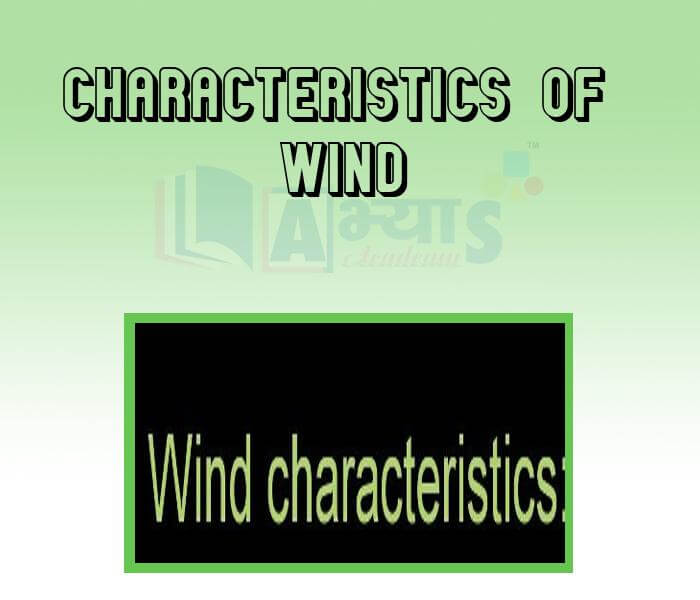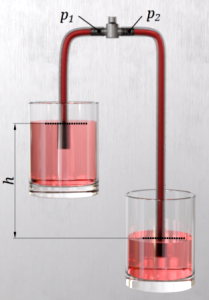Effects of Atmospheric Pressure







Effects of Atmospheric Pressure
Making Use of Air Pressure In Daily Life:
1. Filling Medicine In A Dropper And Ink In Fountain Pen: When we dip a medicine dropper into some liquid medicine and press the rubber bulb, we see the bubbles of air escapes. Now when we release the bulb, the medicine fills the tube. It is because when the bulb is pressed, the air inside the tube is forced out. When the bulb is released, the pressure inside the tube becomes less but pressure of air outside is more. So, the larger pressure of air outside pushes the medicine in the glass tube of dropper. The same process occurs when we fill ink in fountain pen.
2. Filling Medicines In Syringe: Doctors use syringe for injections. The medicine in the syringe is also filled due to air pressure when we push the piston of the syringe inside, air is pushed out through the narrow hole in the needle. When we put the needle in the liquid medicine and pull the handle outside, air pressure pushes the medicine into the syringe.

3. Air Pressure Helps In Drinking With A Straw: We drink cold drinks with the help of a straw. This is also based on the air pressure. When you suck a straw, you swallow some of the air from the straw. This makes the pressure of air inside the straw less than the pressure of the air outside. So, the outside air pushes the cold drink into the straw.
4. Air Pressure Helps In Making A Fountain: We can set - up a fountain by making use of air pressure. Let us take a big bottle. Fit it with a stopper and make two holes on the stopper. Put a straight and a long glass tube in one hole. The upper end of the tube should have narrow mouth. Put a bent glass tube in the second hole. Now put some water in the bottle. The end of the straight tube should dip in the water and that of bent tube should remain outside the water. Put the stopper and make it air tight. Now blow air through bent tube. When we blow air through bent tube, the pressure inside the bottle increases. This pushes the water to rise through the second tube. It comes out in the form of a fountain.

5. Air Pressure Forces Liquids Through A Siphon: Siphon is used to draw liquids from big vessels. It is a tube of glass, metal or rubber. The tube consists of shorter arm and longer arm. The shorter arm of the tube is put into the liquid in the big vessel. The longer arm is put into the empty container. Air is sucked from the longer arm. The pressure inside the tube decreases and liquid rises in the tube from shorter end and starts coming out. The liquid is collected in the other vessel at a lower level. It continues to flow until the level in the two vessels become equal or complete liquid is drawn out.

6. Air Pressure Can Push The Things: Air Exerts pressure and push the things. The sail boat moves use of air pressure. Wind mill and flying kites are also of common examples.
Variation of Atmospheric Pressure:
1. The atmospheric pressure changes from place to place time to time. This is due to changes in temperature and quantity of water vapour in the air. The density of moist air is less than that of dry air. The density also decreases with an increase in temperature. Hence, the atmospheric pressure also decreases.
2. Atmospheric pressure at a place is due to the weight of the air above it, therefore the pressure will decrease as we go higher above the sea-level. Thus, the atmospheric pressure decreases with increasing altitude.
Consequences of atmospheric pressure:
1. Our Body And Atmospheric Pressure: Our body and the bodies of other organisms are made up of cells which have fluids that exert pressure from within. The air and other fluids inside our bodies exert an outward pressure equal to atmospheric pressure. Hence, we always remain under balanced position, i.e., net pressure on our body is zero under normal conditions. The atmospheric pressure reduces as we go at higher altitude. Since, the air becomes less dense the air pressure at the height at which a jet plane flies is very low. At such heights the pressure exerted by the blood in our body is much higher than the outside pressure. This can cause blood vessels to burst, which can lead to problems like bleeding from the nose. At that height the amount of oxygen in the air is also not sufficient for us to breathe. That is why, the inside pressure in an aeroplane is maintained at the normal ground level atmospheric pressure.
2. A fountain pen leaks at higher altitudes, because the air pressure inside the ink tube of pen is higher than the air pressure outside. When we breathe in, our ribs move outwards our diaphragm moves down. the volume of the chest cavity increases and the air inside is spread over a larger space. This reduces the pressure inside. The air pressure outside is greater and pushes air into the lungs.
3. Studying the pressure of different parts of the atmosphere helps meteorologists to make predictions about the weather. Ships out at sea carry barometers to warn them of storms. Airplanes carry altimeter, a special kind of barometer which helps them measure the altitude at which they fly.
NOTE:
· About 300 years ago scientist Otto Von Guericke, did a marvellous experiment in Germany. With the help of a vacuum pump, he removed the air from two large hollow metallic hemispheres fitted together to form an airtight sphere, He then tied sixteen horses, eight on each hemisphere to pull them apart. But the force of air pressure was so great that the two hemispheres could not be separated.
· A vacuum cleaner works removing some of the air inside itself. This reduces the Pressure inside it. So, the air pressure outside is greater than the air pressure inside it. The air pressure outside the vacuum cleaner pushes air into it, taking dust and dirt with it.

Which of the following are correct : (a) Atmospheric pressure is defined as the pressure exerted on an object by the weight of the air above it. (b) The atmospheric pressure on the Earth's surface at sea level is about one hundred thousand pascal, i.e., 100 kPa. | |||
| Right Option : C | |||
| View Explanation | |||
The excess pressure at depth below the surface of liquid open to the atmosphere is called | |||
| Right Option : C | |||
| View Explanation | |||
If an enormous amount of pressure is acting on us, we do not feel it, this is because the pressure of the blood in our blood vessels and that of the other fluids present in the body _______________the atmospheric pressure. | |||
| Right Option : A | |||
| View Explanation | |||
Students / Parents Reviews [10]
My experience with Abhyas is very good. I have learnt many things here like vedic maths and reasoning also. Teachers here first take our doubts and then there are assignments to verify our weak points.

Shivam Rana
7thAbhyas Methodology is very good. It is based on according to student and each child manages accordingly to its properly. Methodology has improved the abilities of students to shine them in future.

Manish Kumar
10thMy experience with Abhyas academy is very good. I did not think that my every subject coming here will be so strong. The main thing is that the online tests had made me learn here more things.

Hiya Gupta
8thIt was a good experience with Abhyas Academy. I even faced problems in starting but slowly and steadily overcomed. Especially reasoning classes helped me a lot.

Cheshta
10thI have spent a wonderful time in Abhyas academy. It has made my reasoning more apt, English more stronger and Maths an interesting subject for me. It has given me a habbit of self studying

Yatharthi Sharma
10thBeing a parent, I saw my daughter improvement in her studies by seeing a good result in all day to day compititive exam TMO, NSO, IEO etc and as well as studies. I have got a fruitful result from my daughter.

Prisha Gupta
8thAbhyas is a complete education Institute. Here extreme care is taken by teacher with the help of regular exam. Extra classes also conducted by the institute, if the student is weak.

Om Umang
10thOne of the best institutes to develope a child interest in studies.Provides SST and English knowledge also unlike other institutes. Teachers are co operative and friendly online tests andPPT develope practical knowledge also.

Aman Kumar Shrivastava
10thAbout Abhyas metholodology the teachers are very nice and hardworking toward students.The Centre Head Mrs Anu Sethi is also a brilliant teacher.Abhyas has taught me how to overcome problems and has always taken my doubts and suppoeted me.

Shreya Shrivastava
8thA marvelous experience with Abhyas. I am glad to share that my ward has achieved more than enough at the Ambala ABHYAS centre. Years have passed on and more and more he has gained. May the centre flourish and develop day by day by the grace of God.
